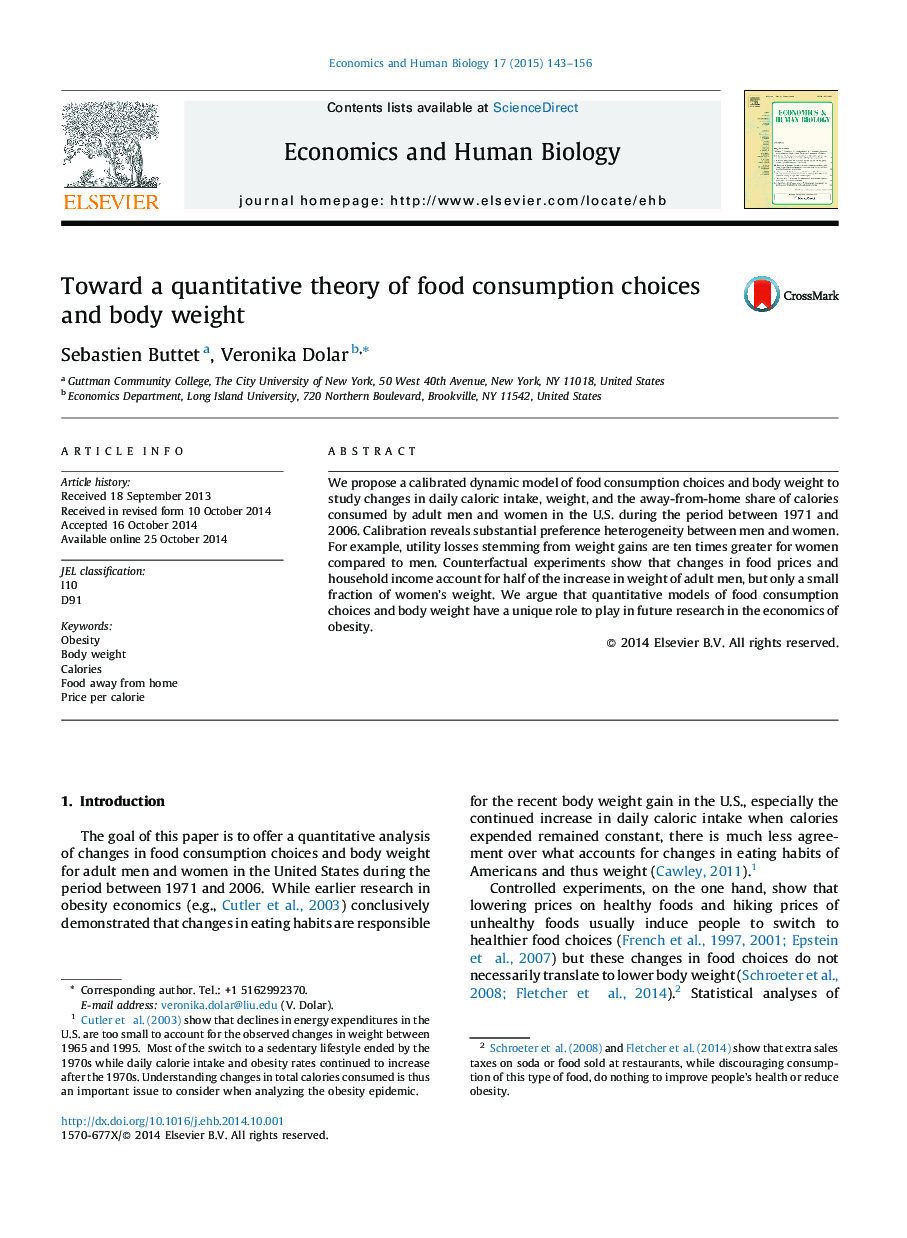| Article ID | Journal | Published Year | Pages | File Type |
|---|---|---|---|---|
| 5057052 | Economics & Human Biology | 2015 | 14 Pages |
â¢We use a calibrated dynamic model to study how food prices and income affect weight.â¢Calibration reveals substantial preference heterogeneity between men and women.â¢Utility loss stemming from weight gain is ten times greater for women than for men.â¢Changes in prices and income account for under half of the weight increase for men.â¢Same changes in prices and income account for a small fraction of women's weight.
We propose a calibrated dynamic model of food consumption choices and body weight to study changes in daily caloric intake, weight, and the away-from-home share of calories consumed by adult men and women in the U.S. during the period between 1971 and 2006. Calibration reveals substantial preference heterogeneity between men and women. For example, utility losses stemming from weight gains are ten times greater for women compared to men. Counterfactual experiments show that changes in food prices and household income account for half of the increase in weight of adult men, but only a small fraction of women's weight. We argue that quantitative models of food consumption choices and body weight have a unique role to play in future research in the economics of obesity.
